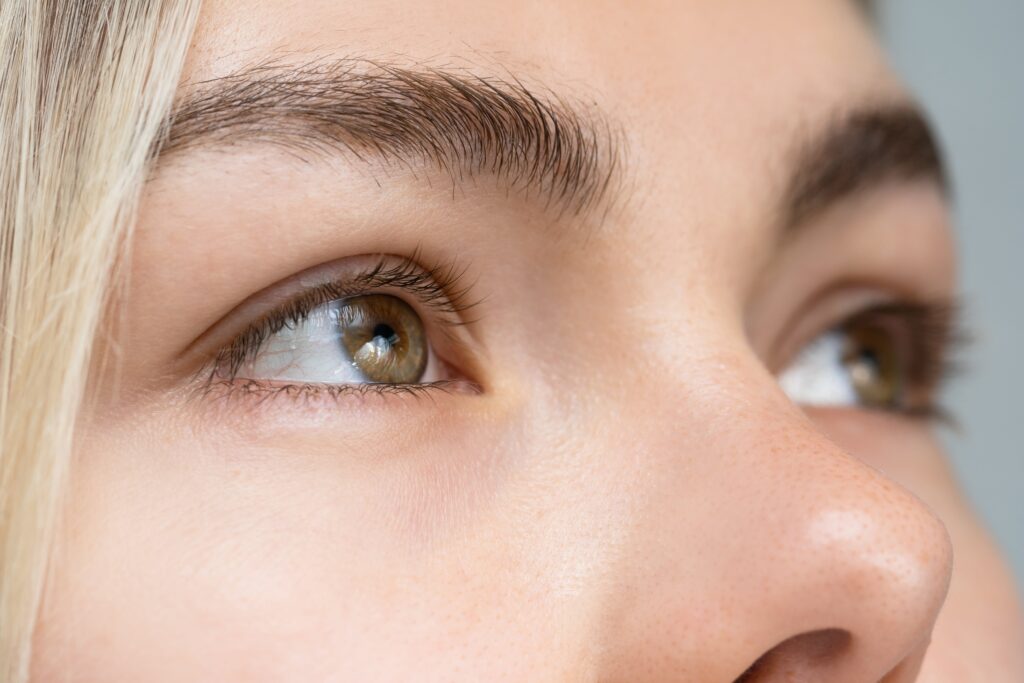Dry eyes are a common issue and undoubtedly frustrating, but it’s important to remember that they can also be a sign of an underlying health condition, including autoimmune diseases. Autoimmune diseases occur when the immune system mistakenly attacks the body’s own tissues — and in some cases, those tissues might include the glands responsible for producing tears. Fortunately, your general physician and eye doctor can help you understand the link between these conditions and find effective relief. Scroll down to explore autoimmune diseases that cause dry eyes.
Autoimmune Diseases & Dry Eyes
Sometimes dry eyes are a side effect of a medication or a byproduct of aging, as tear production naturally declines with age. In other cases, they’re caused by lifestyle choices and environmental factors (staring at a screen for long periods; exposure to dry air, wind, smoke, etc.). Meibomian Gland Dysfunction (MGD) is a common culprit, and perhaps surprisingly, laser eye surgery and contact lens use are both associated with dry eyes as well.
Clearly, dry eyes have many causes! You’ll need to visit your doctor to get to the root of the issue if you’ve been experiencing dryness. Today, we’re going to focus on autoimmune diseases that cause dry eyes. Whether you’ve been diagnosed with one of these conditions or you’re wondering if they could explain why your eyes have been feeling so dry, irritated, and uncomfortable, you might find it helpful to explore the connection between autoimmune diseases and dry eyes.
Several autoimmune diseases are known to trigger dry eyes, so we’re going to focus on a few of the most common.
Sjögren’s Syndrome
Sjögren’s syndrome is the most well-known autoimmune cause of dry eyes. It’s a chronic disease in which the body’s immune system attacks its own exocrine glands, especially the moisture-producing glands like tear glands and salivary glands. The primary symptoms are dry eyes and dry mouth, but it can also impact the joints, skin, kidneys, lungs, and nerves. It may occur on its own (in which case, it’s called primary Sjögren’s) or alongside other autoimmune diseases (secondary Sjögren’s).
Rheumatoid Arthritis (RA)
When you hear the word arthritis, you might immediately think about the joints. And while RA does primarily impact joints, it can also inflame the eyes, leading to dry eyes and other ocular issues like scleritis (inflammation of the white part of your eye). It’s often linked with secondary Sjögren’s syndrome.
Lupus
A chronic disease that often runs in families, lupus affects multiple organs and bodily systems. It can cause inflammation of the tear glands or secondary Sjögren’s syndrome. In addition to symptoms like joint pain and fatigue, people with lupus may experience dry eyes.
Graves’ Disease
Graves’ disease is a type of hypothyroidism, a thyroid condition characterized by an overactive gland that produces too much thyroid hormone. One of the most well-known symptoms is eye bulging. Graves’ disease affects tear film stability due to poor eyelid closure and/or inflammation, which can lead to eye dryness.
Multiple Sclerosis (MS)
A long-lasting neurological condition, MS causes the breakdown of the protective covering of nerves. It’s unpredictable and affects people differently, but in some cases, it affects the eye nerves and the blink reflex. This can lead to reduced blinking, triggering dry eyes.
Psoriatic Arthritis
Psoriatic arthritis is a type of inflammatory arthritis that occurs in some people with psoriasis, which is a skin condition characterized by red, scaly patches. It affects the skin and joints, and it can cause inflammation in various parts of the eye, leading to dryness. Some people with psoriatic arthritis develop conjunctivitis (inflammation of the eye lining), keratitis (cornea inflammation), secondary Sjögren’s syndrome, or MGD.
_____
If you’ve been experiencing eye dryness, make an appointment with your general physician to check that your dry eyes aren’t related to another health condition, especially if you’ve been experiencing other symptoms. In addition, schedule an appointment with your eye doctor to explore available dry eye treatments, including Intense Pulsed Light (IPL) therapy, Low-Level Light Therapy (LLLT), iLUX2®, and more.
Do you suffer from dry eyes? If you live in southwest Missouri, stop by Heffington’s. Since 1975, the Heffington family has assisted the Springfield community with top-quality eye care and affordable eyeglasses and contacts. To learn more about our products and services, please get in touch with us online, send an e-mail to asktheexperts@heffingtons.com, or give us a call at 417-869-3937 (Optiland location) or 417-882-3937 (House of Vision location).

